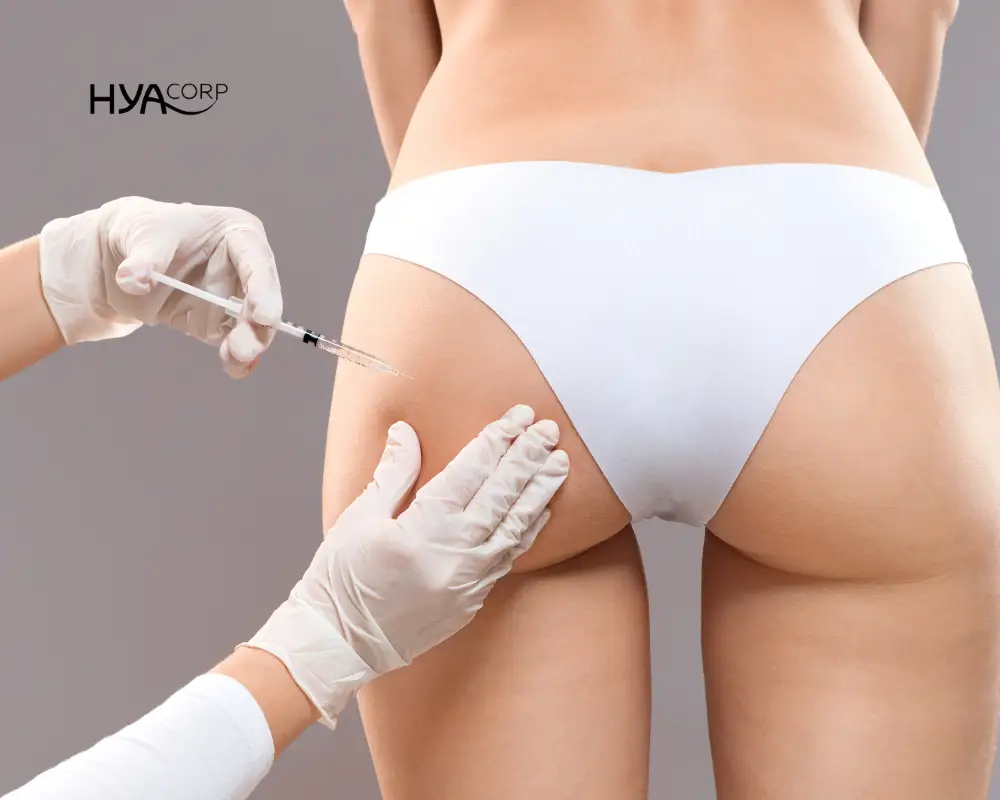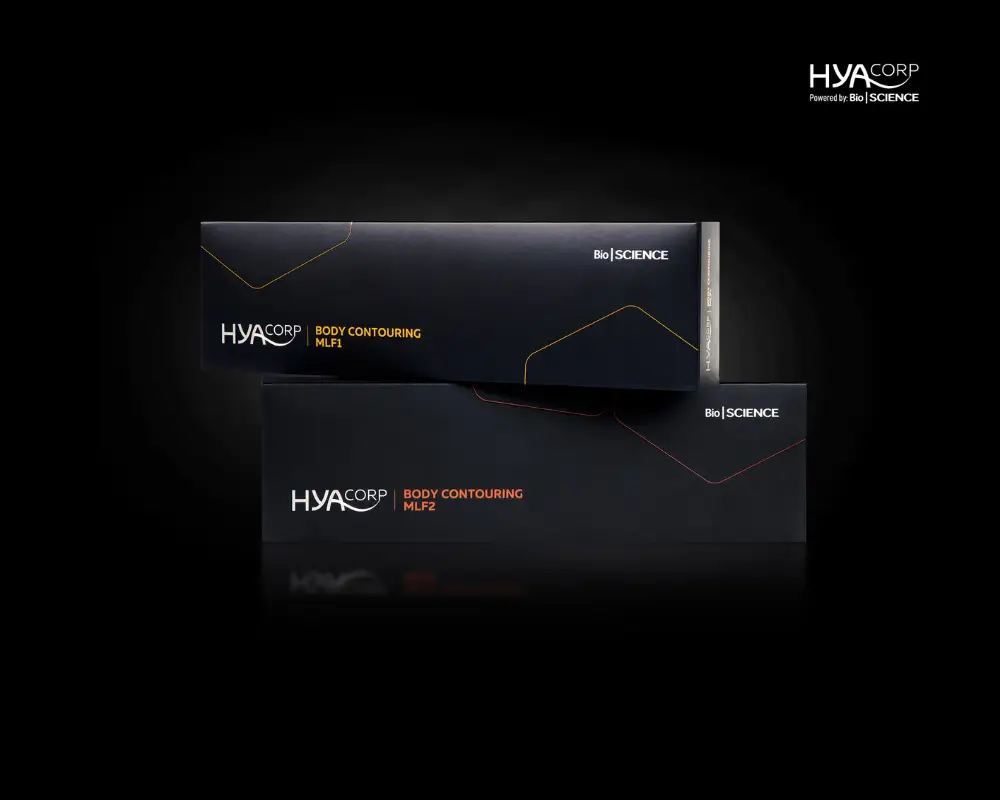Hyaluronic acid has recently grown to popularity as a "beauty-must" ingredient. While the word "acid" does not immediately strike thoughts of hydration or moisturization, undoubtedly there are many benefits of hyaluronic acid for face. In fact, it has become one of the few ingredients that are extensively recommended by experts to be included in the daily skincare regime. HA, a naturally occurring substance produced by our bodies has topped the list as the most effective solution to nearly all aging skin concerns. There are many hyaluronic acid products available on the market. However, its composition, function, and use can often be misunderstood amongst a sea of options available to a user. Still, the most common ways of utilizing HA are either through its injection into the deeper layers of the skin to help restore volume or its use in creams and serums for topical rejuvenation. Before we round up the benefits of hyaluronic acid on the market, it is best to make sense of the element.
What is Hyaluronic Acid?
Hyaluronic Acid (HA) is a substance that occurs naturally in the body throughout connective, epithelial, and neural tissues. It acts as a tissue lubricant and plays a role in cell proliferation and differentiation.
There are many benefits of hyaluronic acid in the body such as tissue repair, wound healing, the development of scar tissue, and the stability of skin structure.
The average 70 kg adult has roughly 15 grams of HA in their body at any given time. However, as we age the amount of hyaluronic acid naturally produced by skin decreases, leading to early signs of aging such as fine lines and wrinkles.
Hyaluronic Acid holds up to 1000 times its weight in water - which explains why one of its first uses as a supplement was as a component in beauty products. In the past few years, HA has also been used as an injectable filler to plump up wrinkles and restore volume loss.
Suggested Reading: How to Get Rid of Under Eye Wrinkles: Top Procedures and Treatments
Types Of Hyaluronic Acid
The different types of HA are defined based on their molecular weight. They can occur naturally in the body, or be synthesized in a lab. Different types of HA play different roles in the body. Larger chain HA's (like HMW) tend to attract more water and also can penetrate the skin and play a role in cell proliferation.
HIGH MOLECULAR WEIGHT: (20-24 Million Daltons) The HMW molecules are naturally occurring, but can be synthesized by adding sodium to bacterial fermentation vats. Larger HA's take longer to cross the epidermal barrier and penetrate the skin. They have a greater ability to hold water, which can make them useful as an injectable for plumping up wrinkles.
MEDIUM MOLECULAR WEIGHT: (5-20 Million Daltons) MMW HA's are smaller than HMW HA's and they will penetrate the epidermal barrier more easily. They will also penetrate the GI tract easier, which means that they can be used as an ingredient in anti-wrinkle supplements.
SYNTHETIC: (1 Million Daltons - 5 Million Daltons) this is the smallest type of HA. It is mostly used as a moisturizer or filler. Some studies have indicated that it can increase collagen production, but more research is needed to prove its effectiveness in this role.
Hyaluronic Acid In Skin Care Products
Topical Products
The level of hyaluronic acid decreases with age, and this accounts for the skin's tendency to get drier and develop fine lines or wrinkles. By adding back moisture into the skin, hyaluronic acid serums boost firmness and delay the formation of aging signs. It also delivers many short-term benefits by furnishing a glowing complexion. Regardless of age, skin type, or concern, HA is an oil-free ingredient that can instantly make a difference. The benefits of hyaluronic acid also extend to moisturizers. They are often used in moisturizers because it helps soothe and hydrate the skin, and they can be combined with other substances to further the moisturizing effect.
Hyaluronic Acid Dermal Fillers
Hyaluronic acid dermal fillers are made from a biocompatible, cross-linked HA gel. This type of product is injected into the skin to add volume and lift sagging areas such as nasolabial folds. Some of the other hyaluronic acid benefits for skin include increased hydration and plump-looking skin fillers normally leave behind.
Hyaluronic acid dermal fillers have been chemically cross-linked to allow the body's natural enzymes to slow down the normal breakdown of HA. Their ability to remain in place for a long period of time makes them ideal products to add volume, hydrate, and treat fine lines and wrinkles.
Suggested Reading: Non-Surgical Body Contouring: Are Fillers the Best Alternative?
Benefits of Hyaluronic Acid
Its seemingly magical capacity to retain moisture and incredible benefits of hyaluronic acid for face are why the cosmetic industry adores the component so much. It has been shown in studies to be exceptionally excellent at interacting with water molecules. Because one of the main causes of aging skin is a lack of moisture, hyaluronic acid is a must-have for rebuilding your skin's moisture barrier.
1. Retains Moisture: Hyaluronic acid helps to replace and hold cell moisture, resulting in plump, moisturized skin.
2. Reduces fine lines and wrinkles: Because dry skin is one of the main causes of wrinkles, hyaluronic acid helps to replenish lost moisture and decrease the appearance of fine lines.
3. Smooths Skin Texture: A study found that one of the hyaluronic acid benefits for skin is that it can minimize the roughness of a person’s skin and increase skin’s elasticity helping make the skin appear smoother and even-toned.
4. Safe for use in fillers: Because hyaluronic acid's composition is so similar to that of body substances, it works effectively as a filler that doesn't irritate the skin. It can also enhance volume to regions that naturally lose volume over time, such as the lips and cheeks.
5. Quick Absorbing Quality: Unlike certain skincare products, hyaluronic acid dissolves fast into the skin, resulting in minimal product waste.
6. Non-irritating: Hyaluronic acid is generally non-irritating and suitable for all skin types.
7. Short-term Injectable: Hyaluronic acid lasts around a year when used as a filler. It dissolves naturally, so you won't need to see a doctor have the filler removed.
8. Various applications: You have a lot of options for how and when you utilize hyaluronic acid because you can apply it topically, get it injected, or take it as a supplement.
Side Effects of Hyaluronic Acid
When it comes to applying the component topically, there are a few side effects of hyaluronic acid to be aware of before using the products.
1. First of all, hyaluronic is a substance that can irritate the eyes in case it gets into them.
2. Secondly, people who are sensitive to this substance should not use topical preparations with high concentrations of sodium hyaluronate.
3. Finally, there is always a risk of side effects if any topical solution is applied directly to damaged skin.
There is another set of minor risks to consider if you're thinking about having hyaluronic acid fillers.
Side Effects of Hyaluronic Acid Fillers
Since HA is found naturally in the body, the risk of adverse events is improbable. HA dermal filler's most common reactions are limited to redness, swelling, or slight bruising - common with every injection. Furthermore, the contraindications should also be considered before opting for the procedure to minimize the adverse events. In case of a side effect, HA fillers can easily be dissolved using hyaluronidase, making it a convenient and safe aesthetic option.
Upon the conclusion of the treatment, one of the common side effects of hyaluronic acid fillers is that patients may develop bruises at the injection site and have minor swelling, which will subside in a few days after post-treatment. The result can be appropriately analyzed only after these post-treatment events have settled down.
A standard solution may not work for all skin types, and it may take some time to accommodate a product in your skincare routine. It's also necessary to not go overboard and use many products or get multiple skin treatments. Not all products can suit a particular skin type, and understanding this is very important. Since HA is a natural component of the body, there are many benefits of hyaluronic acid for face and the HA-based products are ideal for injectable as well as topical treatments delivering on expectations while remaining considerably safe and effective. Still, it is advised to opt for products recommended by specialists for your skin.
Contact Us to know more details on hyaluronic acid face and body fillers and how Hyacorp can help to achieve the desired results.










